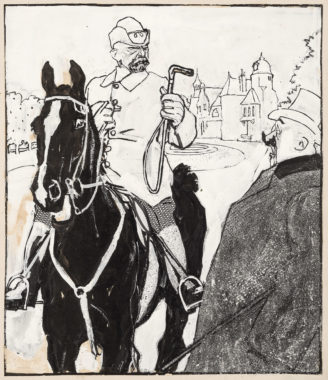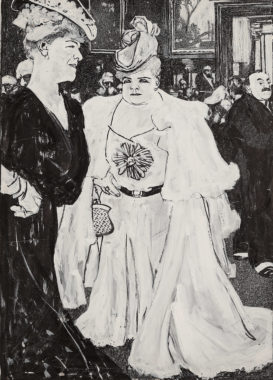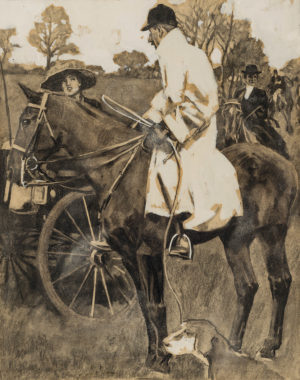Thöny, Eduard
Sold Artworks
Biography
Eduard Thöny
1866 Brixen (South Tyrol) – 1950 Holzhausen am Ammersee (Bavaria)
Born to South Tyrolean parents, Eduard Thöny grew up in Munich. He studied genre and history painting at the Munich Academy of Art from 1886 to 1892. On study trips to Paris, Berlin and London he came into contact with the work of contemporary illustrators and gained first-hand experience of big-city life in different social environments. Both factors were to have a formative influence on his artistic development.
As a student Thöny earned his living producing drawings for illustrated magazines and journals such as the Münchner Humoristische Blätter. His work quickly attracted the attention of Albert Langen, the publisher of Simplicissimus, a Munich-based satirical magazine founded by Langen in 1896. Thöny soon joined Langen’s roster of regular contributors. He was to be one of the magazine’s most prolific illustrators and a key contributor to its success. The magazine advanced to be one of Germany’s leading satirical publications. Other important Simplicissimus artists were Thomas Theodor Heine, Bruno Paul and Ferdinand von Reznicek. Over 3,400 caricatures by Thöny were to appear in Simplicissimus before the magazine was closed down in 1944.
Thöny was a caricaturist par excellence who focussed almost exclusively on subjects drawn from modern society. The city of Munich and its rural hinterland were a major source of artistic inspiration. His observation of life in Berlin also provided a rich reservoir of motifs and characters. In his illustrations for Simplicissimus he depicted figures from all walks of life – members of the aristocracy and the proletariat, military figures and the bourgeoisie, bohemians and the elite. Themes like social vanity, intellectual blindness and moral neglect abound in his work but his drawings were never designed to injure or harm the characters depicted. His intention was that of an anthropologist, using ink, pen and brush to capture the character type behind each individual. This gives his work a timeless quality.
Thöny’s caricatures immediately struck a chord with Simplicissimus readers. Langen was quick to exploit their popularity – between 1899 and 1910 five portfolios were published reproducing several hundred of Thöny’s drawings (titles included Der Leutnant, Thöny- Album, Militär, Vom Kadetten zum General and Der Bunte Rock).
The popularity of his drawings is attributable both to their visual humour and to Thöny’s choice of motif. But their success also owes much to his ingenious, highly experimental style of draughtsmanship. His predilection for Indian ink and opaque white combined with complex spray techniques lends many of the caricatures a painterly quality. Leading Berlin dealers Bruno and Paul Cassirer, and Munich dealers Brakl’s Moderne Kunsthandlung and Galerie Heinemann staged one-man exhibitions of Thöny’s work in the period up to the First World War and it was also shown regularly in group exhibitions.
PDF Download

